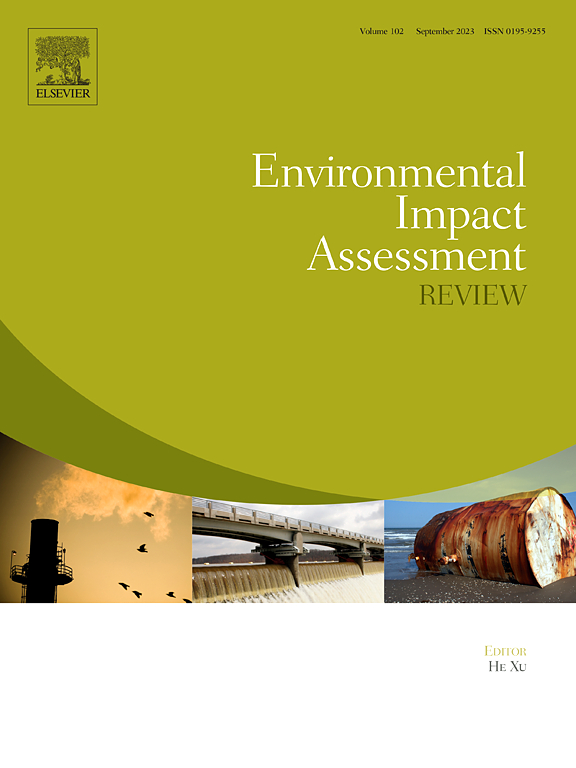Dynamic evolution and interaction mechanisms of socio-ecological systems and water constraints within an adaptive cycle framework: A case study of the Lower Yangtze River Basin
IF 9.8
1区 社会学
Q1 ENVIRONMENTAL STUDIES
引用次数: 0
Abstract
The dynamic mechanisms by which water constraints (WC) regulate socio-ecological system (SES) adaptation remain underexplored, hindering effective water governance strategies. This study fills that gap by examining how WC modulates SES adaptability throughout the adaptive cycle—revealing its regulatory role, feedback pathways, and changing influence on SES resilience over time. By integrating adaptive cycle theory, catastrophe progression models, the DPSIR framework, and cloud-based assessment techniques, we develop a dynamic analytical framework that captures the nonlinear, multi-scale interactions between WC and SES evolution in river basins. Our results show that WC exerts negative pressures during conservation (K) and release (Ω) phases while triggering adaptive shifts during reorganization (α) and exploitation (γ) phases. In 70 % of cities, HSS and EES exhibit a synergistic adaptation pattern, although the strength and direction of their coupling vary with the cycle stage. Moreover, WC has asymmetrical effects by stimulating HSS growth while constraining EES, creating a competition-cooperation dynamic between socio-economic and ecological functions. We also identify a unidirectional causality from WC to SES, in contrast to the bidirectional relationships between WC and both HSS and EES, indicating reciprocal adaptation processes. Impulse response analysis further reveals that while SES resilience to WC improves over time, excessive WC stress can lead to long-term ecological trade-offs and instability. Overall, our findings challenge the traditional view of WC as a static constraint and instead position it as a dynamic driver of socio-ecological restructuring, offering a predictive framework for assessing SES resilience and providing actionable insights for adaptive water governance and sustainable urban planning in resource-scarce regions globally.
适应循环框架下社会生态系统与水资源约束的动态演化与相互作用机制——以长江下游流域为例
水资源约束(WC)调节社会生态系统(SES)适应的动态机制尚未得到充分探索,这阻碍了有效的水资源治理策略。本研究通过研究WC在整个适应周期中如何调节SES适应性来填补这一空白,揭示其调节作用、反馈途径以及随时间变化对SES适应性的影响。通过整合自适应循环理论、突变级数模型、DPSIR框架和基于云的评估技术,我们开发了一个动态分析框架,该框架捕捉了流域水资源和SES演变之间的非线性、多尺度相互作用。我们的研究结果表明,WC在保护(K)和释放(Ω)阶段施加负压,而在重组(α)和开发(γ)阶段触发适应性变化。在70%的城市中,HSS和EES表现出协同适应模式,尽管它们的耦合强度和方向随周期阶段而变化。此外,用水量具有不对称效应,在刺激HSS增长的同时约束EES,在社会经济和生态功能之间形成竞争-合作的动态。我们还发现,与水分与高ss和EES之间的双向关系不同,水分与SES之间存在单向因果关系,表明了相互的适应过程。脉冲响应分析进一步表明,虽然SES对WC的恢复能力随着时间的推移而提高,但过度的WC压力可能导致长期的生态权衡和不稳定。总体而言,我们的研究结果挑战了将用水量视为静态约束的传统观点,将其定位为社会生态结构调整的动态驱动因素,为评估SES弹性提供了预测框架,并为全球资源稀缺地区的适应性水治理和可持续城市规划提供了可操作的见解。
本文章由计算机程序翻译,如有差异,请以英文原文为准。
求助全文
约1分钟内获得全文
求助全文
来源期刊

Environmental Impact Assessment Review
ENVIRONMENTAL STUDIES-
CiteScore
12.60
自引率
10.10%
发文量
200
审稿时长
33 days
期刊介绍:
Environmental Impact Assessment Review is an interdisciplinary journal that serves a global audience of practitioners, policymakers, and academics involved in assessing the environmental impact of policies, projects, processes, and products. The journal focuses on innovative theory and practice in environmental impact assessment (EIA). Papers are expected to present innovative ideas, be topical, and coherent. The journal emphasizes concepts, methods, techniques, approaches, and systems related to EIA theory and practice.
 求助内容:
求助内容: 应助结果提醒方式:
应助结果提醒方式:


